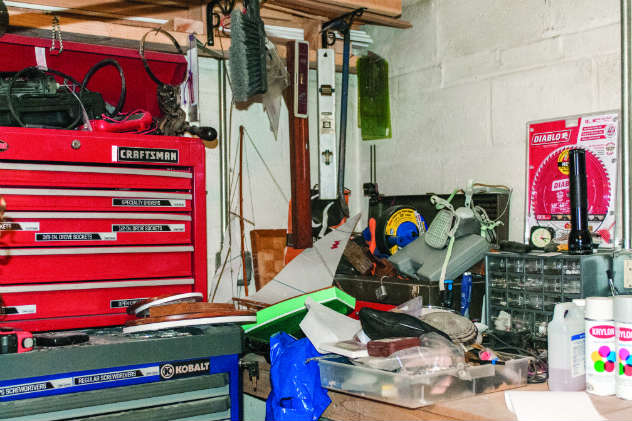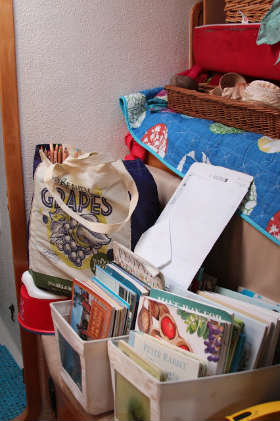Breaking Up with Your Stuff in Six Steps
Did you know that your Crock-Pot could be ruining your life? Along with your blender, toaster oven, and cappuccino machine, that little slow cooker might be keeping you from realizing your lifelong dream of moving aboard and sailing away. “Don’t be ridiculous!” you say. I know—it sounds crazy, but if you’d rather sip painkillers in the BVIs instead of sitting in traffic at BWI, it may be time to take a serious look at your relationship with stuff.
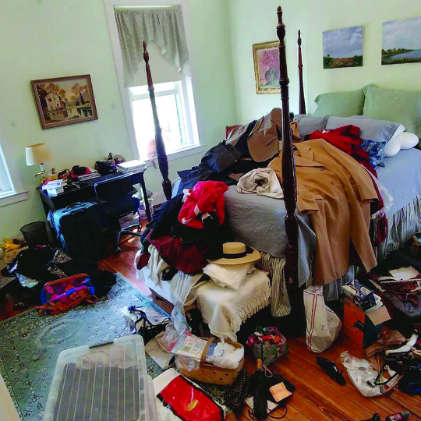
My wife and I lived aboard and cruised for almost seven years. We’ve gotten dozens of emails from people who are preparing to make the transition to full-time liveaboard, asking for advice on everything from anchors to zip ties. They’ve taken the navigation courses, are certified in CPR and First Aid, and have read everything ever written from the Pardeys to John Kretschmer. But when I ask how they’re doing with their downsizing, the response is usually, “We haven’t started.” Or “We’re afraid to go into the garage.” The most common is, “We have no idea where to begin.”
It’s understandable. As a society, we’ve accumulated so much stuff that the idea of going through it, sorting it, and donating or throwing it away is so overwhelming that many never even attempt it. Today, 25 percent of American homeowners can’t fit a car inside their two-car garage. The average American spends 55 minutes a day (that’s 12 days per year), looking for things they know they own, but can’t find. And 80 percent of what we own, we never use. Think about that!
A recent University of California study revealed that women’s stress hormones spike when they are tasked with decluttering their homes. The emotional and physical effects that dealing with clutter exacts on the mind and body keeps many people from ever fully realizing their dream of moving aboard and sailing.
In 1932, Swiss child psychologist Jean Piaget published a study that determined our attachment to stuff begins shortly after birth. It strengthens through adolescence and into adulthood, where we link our stuff directly to who we are and what we’ve achieved in life. Cars, jewelry, and clothes accentuate our personalities. Houses become beacons of success.
In the 1960s, behavioral economist Richard Thaler discovered what he called, “The endowment effect,” which states that we ascribe more value to things simply because we own them. He found that people will actually pay more to retain an object that they already own than they will to purchase it initially, even when there is no reason for the attachment.
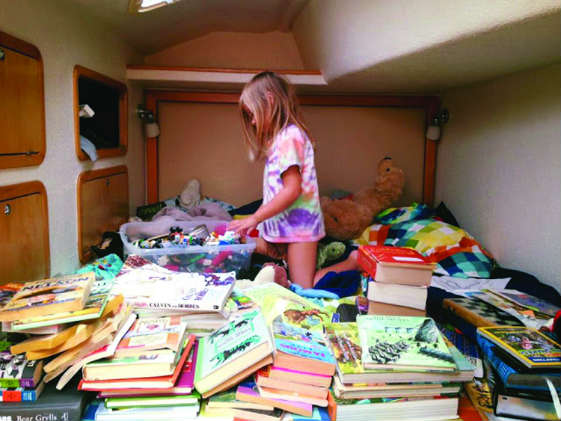
I know, this is pretty intense “stuff,” but it might shed some light on why you care so much about Uncle Frank’s gravy boat that you never use but can’t let go of. You know, the one keeping you from moving onto your real boat.
Maybe Uncle Frank taught you how to sail. Without him, you might not even be considering this incredible adventure of living aboard and sailing to exotic places. You’ve attached the memory and those positive emotions to the object. It reminds you of those early days. You just can’t give it away or you’d be giving away the memory as well. Right?
Let me to tell you, Uncle Frank is not in that gravy boat. The memory is yours. It belongs to you, not the object itself. If you can’t let go of it entirely, take a photo of Uncle Frank’s gravy boat and create a folder on your computer labeled “Memories.” You’ll always be able to look at the photo and connect to the memories associated with dear Uncle Frank.
It doesn’t stop there. Not only do we attach people and positive memories to our stuff, but we also attach future hopes and dreams. The oil paints and easel you’ve kept in the attic for 20 years represent what could be. “Someday, I’m going to start painting again.” Your shoe or watch collection may remind you of a time when you were financially successful. Whatever it may be, these are all real emotions that can be processed in a healthy way.
Now, I’m going to give you six easy tasks to help you start downsizing today. By the end of task six, you’ll be so good at breaking up with your stuff, you might even make a break-up playlist.
Task 1: Gather your luggage, gym bags, and purses.
Go into your attic, basement, or closet and gather up those dusty old suitcases and gym bags. Half of them have broken zippers or missing straps. Ladies, I know you have purses in that closet that you rarely use but just can’t get rid of. They might only match one outfit. Gather them up! Task two will tell you exactly what to do with them.
Task 2: Create four piles.
Simple. In the guest room or the garage, doesn’t matter. One pile is labeled “Keep.” One is labeled “Sell.” One is labeled “Donate.” The last is labeled “Trash.” From now on, whatever you come across during this process goes into one of these piles. Some experts advise a fifth pile for items you’re going to store. I don’t believe in paying to store items. You’ll spend a lot of money to realize you lived just fine without it.
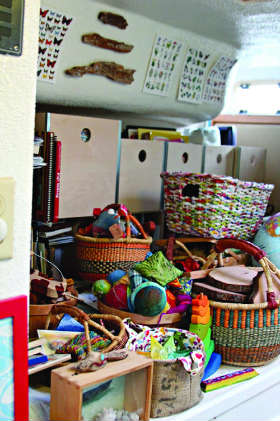
Task 3: Pull your doubles.
Start in the kitchen. Open every cabinet and drawer. Pull out all of your stuff. You’ll be amazed at what you have doubles of. Keep only what you need: pots for cooking, enough place settings for however many you are. Once you have all this stuff separated, you’re going to box up the extra stuff as if you’re moving. We’ll tell you exactly what to do with those boxes in task five.
Task 4: Create a capsule wardrobe.
Time to let you in on a secret that organization bloggers and fashion designers have known for years: the “capsule wardrobe” will change your life. Simply put, you minimize your wardrobe so that you have no more than 30 to 40 items. Remember, we only wear 20 percent of what we own. These items can mix and match to create a myriad of outfits for all seasons. Shoes and outerwear count. Workout clothing, pajamas, and underwear don’t. Try it for three months without buying anything new. You’ll be amazed how much mileage you get out of a blue blazer or grey skirt.
Task 5: Pretend it’s gone.
Once you have what you need set aside, pack everything else into a box or bin, and put it in the garage or a spare room for one week. You’re going to pretend these items are gone forever. If you decide during that week that you absolutely, positively can’t live without Uncle Frank’s gravy boat, go get it from the bin. But have some self-control here. Think about the big picture. At the one-week mark, sell or donate it.
Task 6: Go digital.
For boaters, this is a game changer. Music and books are easily converted. I know e-readers are unromantic, but let’s be honest: we can’t keep 100 books onboard. They get damp. They mold. It’s not pretty. Save your magazine tear sheets and recipes to Pinterest or Evernote. Consolidate whatever you can into the digital world. The cloud is your friend.
For decades, we’ve been programmed and conditioned to believe that our stuff defines who we are. Reprogramming can be uncomfortable, but it’s not impossible. It doesn’t have to negatively affect your health or your relationships; in fact, quite the opposite.
Once you get out from under all that clutter, you’ll see the benefits physically, emotionally, and even financially. Aside from that, donating to schools or local veterans groups will make you feel great. When we did it, we found a single mom in our neighborhood. Seeing her eyes light up when I handed her nearly new kitchen appliances put it all into perspective for us.
I know what you’re feeling. I’ve felt your fears. Trust me, once you go through this process, you’ll look back at your former cluttered life and wonder how you ever tolerated it. We went from a two-bedroom house (with a guest house and storage shed) to a 35-foot sailboat where we still had empty cubbies.
Let a pot roast come between you and permanently sandy feet? Never!
~ By Chris DiCroce
Chris DiCroce is an Amazon bestselling author, online educator, and sailor. After six years of cruising the East Coast, Gulf Coast, and Western Caribbean, he, his wife, and dog are living in Mexico. To find an exclusive downsizing checklist, visit mondovacilando.com/spinsheet.
